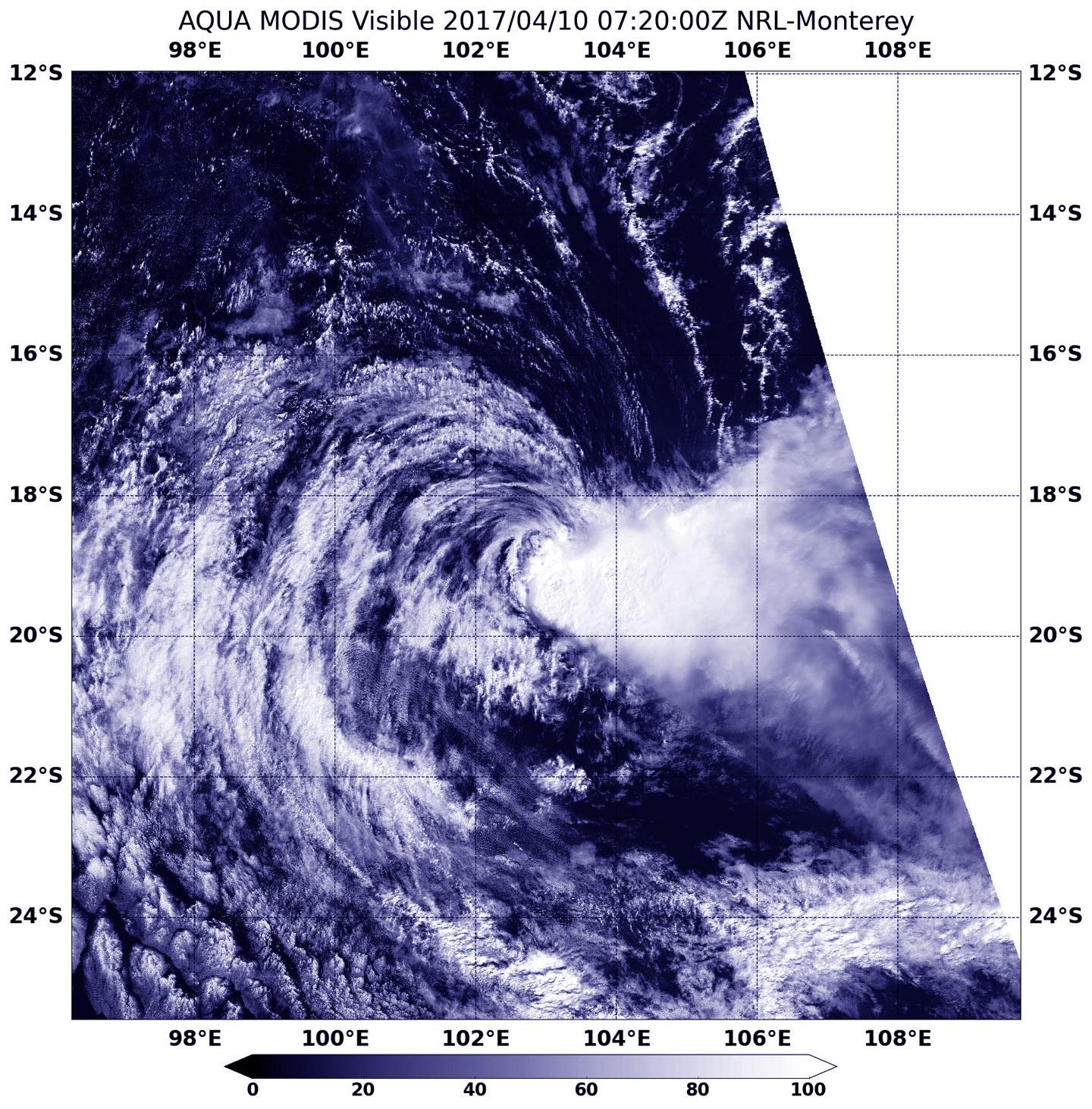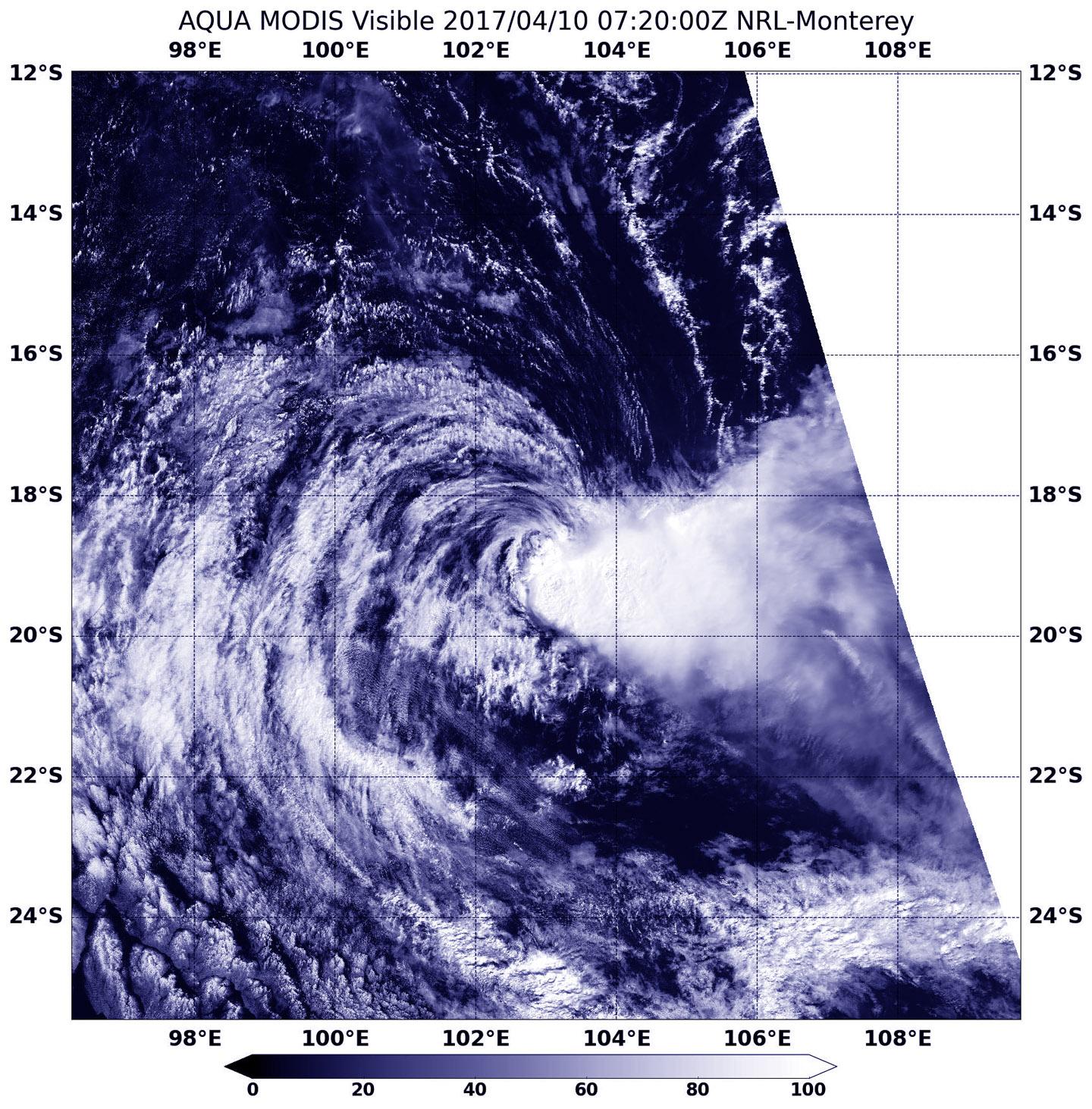
Credit: Credits: NASA/NRL
NASA's Aqua satellite provided a birds-eye view of Tropical Cyclone Ernie as it was being battered by strong vertical wind shear and torn apart.
NASA's Aqua satellite passed over Ernie on April 10 at 0720 UTC (3:20 a.m. EST) and the Moderate Resolution Imaging Spectroradiometer or MODIS instrument took a visible image of the storm. The image showed that strong vertical wind shear had pushed the bulk of clouds and thunderstorms east and southeast of the center of circulation.
The Joint Typhoon Warning Center or JTWC issued their final warning on Ernie at 0900 UTC (5 a.m. EST) on April 9. At that time Ernie's maximum sustained winds were near 40 knots (46 mph/74 kph) and weakening quickly. It was away from land areas, about 660 nautical miles west-northwest of Learmonth, Western Australia. It was centered near 17.4 degrees south latitude and 107.6 degrees east longitude. Ernie was moving to the west-southwest at 12 knots (13.8 mph/22.2 kph).
Ernie was being battered by strong vertical wind shear between 25 to 30 knots (28.7 to 34.5 mph/46.3 to 55.5 kph), and is moving into an area of cooler sea surface temperatures as cold as 25 degrees Celsius (77 degrees Fahrenheit) which will continue weakening the storm. Tropical cyclones need sea surface temperatures of at least 26.6 degrees Celsius (80 degrees Fahrenheit) to maintain strength.
The Joint Typhoon Warning Center expects Ernie to dissipate late on Monday, April 10.
###
Media Contact
Rob Gutro
[email protected]
@NASAGoddard
http://www.nasa.gov/goddard
############
Story Source: Materials provided by Scienmag





